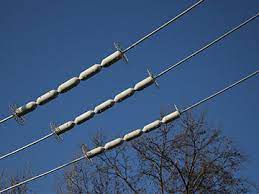
A line guard is a protective device used to maintain proper spacing and separation between conductors. A line guard also helps shed ice and snow in cold climates to reduce the risk of overload or damage to conductors. It also has deterrents such as spikes or barriers to discourage animals from nesting on the lines. It also helps reduce the risk of equipment failure, power outages and electrical fires caused by conductor contact. They are from materials such as metal or composite materials. These help them withstand the different outdoor conditions. Line guards help maintain uninterrupted electricity supply in the tropical storms and monsoons. Common types include spacers, dampers, bird flight diverters, insulator covers and anti-icing devices. They find use in wildlife protection, mechanical protection, improving visibility and anti-icing applications.
Key features of line guard
The line guards have several features that make them effective in performing their intended functions. They vary depending on the specific type and purpose of the line guard. These include factors like voltage levels, environmental conditions and presence of wildlife. The following are the key features of the line guard.
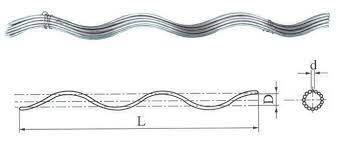
- Material – line guards are from materials that withstand outdoor conditions. These materials include metal and composite materials.
- Electrical insulation – many line guards cover with insulation material to prevent unintended electrical contact.
- Weather resistance – they are able to withstand various weather conditions. These include UV radiation, extreme temperatures, rain, snow and ice.
- Ease of installation – they should be easy to install, adjust and replace when necessary.
- Adjustability – they should be able to adjust to accommodate changes in conductor spacing or tension.
- Visibility – line markers and bird deterrents should be highly visible to both birds and maintenance personnel.
- Corrosion resistance – they also have coatings that help them resist corrosion and ensure long-term reliability.
- Compatibility – they should be compatible with specific transmission line components. This is to ensure the proper functionality and fit.
- Durability – they should have a long service life to reduce the need for replacements and maintenance.
Selection and installation of line guard
The selection process involves considering various factors to ensure the best selection of the line guard. These factors include specific needs, environmental conditions, transmission line parameters, maintenance, safety, compliance, performance features, cost and ease of installation. The installation process requires careful planning, adherence to safety procedures and coordination with experienced personnel. The following is a basic installation guide for the line guards on transmission lines.
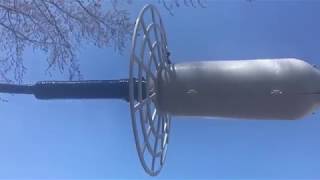
- Assessment and planning – conduct a thorough assessment of the transmission line. This is to determine the locations that need the line guards. Consider conductor spacing, environmental conditions, wildlife presence and vibration issues.
- Selection – choose the suitable type of line guard based on the specific needs identified during the assessment.
- Gather the tools – collect all the necessary tools and equipment required for the installation. These include line guards, mounting hardware, tools and safety equipment.
- Safety precautions – ensure to follow all the necessary personal safety protocols.
- Access to transmission lines – arrange the safe access to the transmission line. This include aerial lifts, helicopters or other equipment.
- Installation – mount the line guard at the desired locations on the transmission line. Ensure secure attachment and alignment following the manufacturer’s guidelines.
- Adjustment – ensure the line guards are set to the correct specifications to fulfill their intended purpose.
- Testing – conduct testing and inspections to verify that the line guards are functioning as intended.
- Documentation – maintain detailed records of the installation process. This is including the locations, specifications and any adjustments made.
Maintenance and inspection of the line guard in Southeast Asia
Conduct regular maintenance and inspection of the line guards. This is to ensure their effectiveness application. This can also help identify and address issues before they cause problems for the installation. It also ensures the line guards remain effective in protecting the transmission lines. The following is a basic guide to the maintenance and inspection of the line guards.

- Establish a regular maintenance schedule for line guards based on the manufacturer’s recommendations.
- Ensure the maintenance personnel are properly trained in electrical safety procedures. They should be also equipped with the necessary personal protective equipment.
- Conduct visual inspections of line guards to check for signs of wear, damage or corrosion. Check for loose bolts, cracked components or visible defects that may compromise the line guard.
- Ensure the line guards are properly aligned and maintains the correct separation between conductors.
- Consider the region’s environmental conditions such as high humidity and exposure to UV radiation. Check for UV degradation or damage to materials and coatings.
- Regularly inspect the line guards for signs of corrosion. Apply corrosion-resistant coatings as needed.
- Maintain detailed records of all maintenance activities. This is including dates, repairs, adjustments made and conditions of the line guards.
- Clean the line guard to remove dust, debris or bird droppings that accumulate on the surface.
- Ensure the maintenance personnel have proper training to recognize the purpose and proper functioning of the line guards.
- Replace any damaged line guards to maintain the integrity of the transmission line.
Comparative analysis of the line guard
A comparative analysis involves evaluating various types of line guards. This is in terms of their performance and cost effectiveness. This includes various factors to ensure the reliability and safety of the electrical grid in the region. The following are the key factors to include in the comparative analysis of the line guards in Southeast Asia.
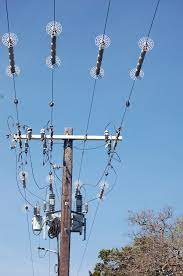
- Purpose and effectiveness – examine how well each type of line guard fulfills its intended purpose. Consider the region’s specific needs such as high humidity, tropical storms and wildlife diversity.
- Durability – evaluate the line guard’s resistance to environmental factors. This includes high humidity, extreme temperatures, UV radiation and salt-laden air in the coastal areas.
- Adaptability to wildlife – examine how the line guards with wildlife protection features interact with the local wildlife. Check their effectiveness in deterring birds and other wildlife without causing harm.
- Vibration damping – consider the ability of the line guard to maintain conductor stability.
- Maintenance requirements – compare the maintenance needs of the different line guard types. Evaluate the frequency of inspection, adjustment or replacement.
- Ease of installation – assess the ease of installation of various line guards. Check their compatibility with existing transmission line components.
- Safety and compliance – ensure the line guards meet the necessary safety standards and regulatory requirements.
- Cost – conduct cost-benefit analysis to determine the overall cost-effectiveness of each line guard type.
Certifications and standards in Southeast Asia
Line guards should adhere to specific certifications and standards in the Southeast Asia. This is to ensure their safety, reliability and compliance with the regional requirements. This helps ensure compliance and the successful deployment of line guards. Additionally, it is advisable that manufacturers and suppliers to research and understand the relevant certifications and standards for the line guards. The following are the common standards in Southeast Asia.
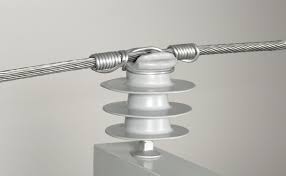
- IEC standards – these are standards for electrical equipment including line guards.
- ASTM standards – the countries sometimes reference ASTM standards for materials and testing procedures.
- ISO certification – these help manufacturers to demonstrate their commitment to quality and consistency in line guard production.
- Local regulatory standards – each country have their own national standards for the electrical equipment.
- Wildlife protection standards – line guards should adhere to relevant wildlife protection and conservation regulations in the regions.
Regional market for line guard in Southeast Asia
There are various factors that shape the regional market for line guards in Southeast Asia. These factors are from the increased need to address specific challenges related to climate, wildlife and environmental conditions. The following are the common factors influencing the regional market.
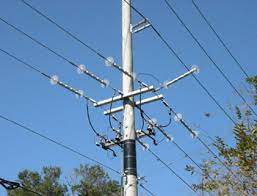
- Infrastructure development – the construction of new transmission and distribution lines creates opportunities for the use of line guards.
- Urbanization – line guards are essential for use in electrical networks. This is to ensure the safety and reliability of power supply in densely populated areas.
- Tropical climate – areas with high humidity, frequent rains and potential for extreme weather events require use of line guards.
- Wildlife protection – the presence of wildlife such as birds and other animals could pose a risk to the electrical infrastructure. The use of line guards prevents bird collisions and other wildlife related incidents.
- Corrosion control – line guards with corrosion resistant materials help to mitigate effects of salt-laden air.
- Ice prevention – ice formation during colder months can impact the power lines. the use of line guards helps to shed this ice for effective operation.
- Renewable energy integration – line guards ensure the reliability of transmission lines connected to renewable energy installations.
Frequently asked questions
Line guards help maintain conductor spacing, protecting against wildlife-related outages, preventing icing and reducing conductor vibrations during strong winds.
The tropical climate brings heavy rainfall, humidity and the risk of extreme weather events like typhoons. Line guards help protect transmission lines from these environmental challenges to ensure a reliable power supply.
Line markers can be able to improve visibility of power lines in densely populated areas. They enhance safety and do not significantly impact the visual aesthetics of the landscape.